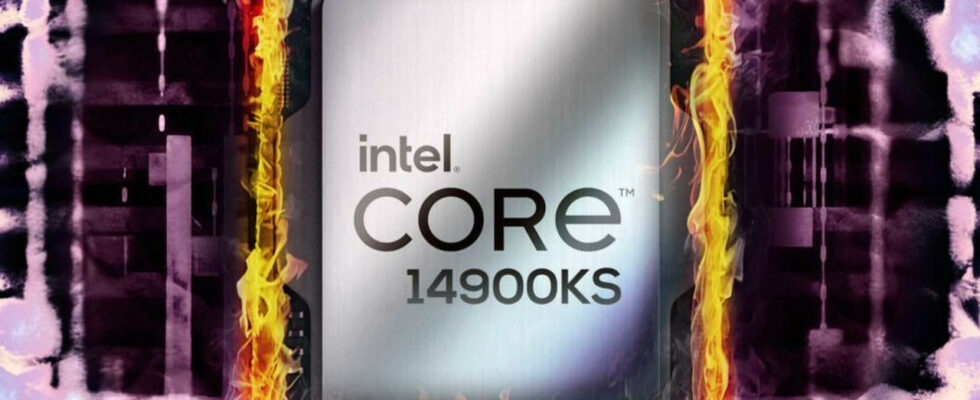On the processors the most powerful, theIntegrated Heat Spreader is causing a sharp increase in consumption and temperature.
A few months ago, it was rumored that Intel was hesitant to release a “KS” version of its Core i9-14900K while the American firm is preparing for a small revolution with the launch of the Arrow Lake generation.
This Core i9-14900KS has finally been validated and although its marketing should not begin for a few more days, certain models are already in the wild. Enough to check what wood they are heating with!
Consumption of more than 400 watts
A first copy of what will represent the spearhead of the Raptor Lake Refresh range had already been seen on the OCCT databases with some interesting information.
We were thus able to mention its maximum frequency of 6.2 GHz on one or two cores, or 200 MHz more than the Core i9-14900K. Still engraved using the Intel 7 process (10 nm), the newcomer has 24 cores divided into 8 high-performance cores and 16 efficient cores. It also has 32 MB of L2 cache and 36 MB of L3 cache.
More important/worrying, the first measurements highlighted quite remarkable heating – up to 101°C on the package – and a gargantuan consumption of more than 400 watts. It didn’t take much for a smart guy to start uncapping/recapsulating the processor.
Up to 10°C lost thanks to liquid metal
Decapping – or delid in English – is the operation aimed at removing the IHS (Integrated Heat Spreader) from a CPU, this metal plate which standardizes heat dissipation and protects the processor core.
By removing the IHS, many tinkerers are able to greatly improve heat dissipation and the Core i9-14900KS should be no exception. Relayed by VideoCardz, a certain Pakhtunov was not the most enterprising and if he did uncap his processor, it was simply to add liquid metal to it to ensure better conductivity. He then replaced the IHS of the Core i9-14900K and added an AiO Deepcool LS720SE.



The results on Y-Cruncher: basic left, modified right © VideoCardz
On the test Cinebench, Pakhtunov was able to note a drop in core temperature of around 10°C (85°C versus 75°C) while consumption went from 376 to 366 watts. On Y-Cruncher, the gains are “inverted” with 7°C better temperature (89°C versus 82°C) for a reduced consumption of 23 watts (423 versus 409 watts). Interesting results which prove once again that there is progress to be made in the management of the IHS.
Also remember that Pakhtunov chose to replace the IHS after applying the liquid metal. Removing it permanently to carry out an assembly with direct cooling of the core is possible, but much riskier: the core is fragile. We can bet that with the release of the Core i9-14900KS scheduled for March 14, many tinkerers will do so very quickly.
Source : VideoCardz


2